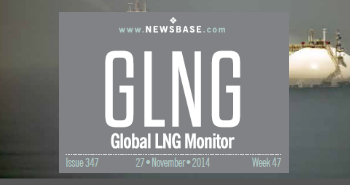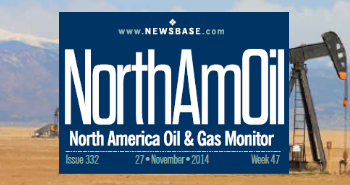Despite Trump’s Tariffs Woodside takes positive FID on Louisiana LNG
Despite tariffs pressures, a silver lining is that payment can be deferred until construction of each train is completed.
WHAT: Woodside has taken a positive FID on Louisiana LNG despite tariffs threatening to raise construction costs on half of equipment and materials.
WHY: Lower energy prices, inflationary pressures and now tariffs all combine to pose a challenge for the project purchased from Tellurian in 2024 for $1.2bn.
WHAT NEXT: With FID taken the company is now seeking to begin producing LNG at the three train facility by 2029. However expansion plans still remain clouded by the threat of tariffs.
Australia’s Woodside Energy is considering the implications of US tariffs on its Louisiana LNG project after taking a positive final investment decision (FID) on April 28.
Reuters reports that as much as half of the equipment and materials needed for the huge four-phase project could be hit with tariffs under US President Donald Trump’s attempt to redefine global trade relations.
Estimates for the first phase of the project have come in at about $16bn. However, US tariffs could pose a significant challenge for the project being built in Calcasieu Parish, which has now received the final go-ahead after considerable delay.
The tariff threat comes at a time when the US Gulf Coast region is grappling with inflationary pressures related to rising wages for skilled labour as well as supply chain constraints.
A number of projects in the region have been delayed due to ballooning costs including Golden Pass LNG, which had its lead contractor Zachry Holdings file for Chapter 11 bankruptcy. Venture Global’s Plaquemines LNG also saw its costs overrun by $2bn due to inflationary pressures.
It is not the first obstacle the project has faced. Initially called Driftwood, cash-strapped LNG developer Tellurian sold the project to Woodside, with the deal completed in late 2024 for $1.2bn as part of the Australian firm’s push to become a “global LNG powerhouse”. No other rivals submitted a bid for the project.
While reporting its first quarter results, the company’s CEO Meg O’Neill acknowledged that Woodside was examining the potential impacts trade tariffs could pose for the project.
However, she attempted to pour cold water on concerns surrounding the impact of the tariffs noting that the project is in a foreign trade zone, thereby enabling tariff fees to be deferred until building each liquefaction train is finished.
Nevertheless, the threat of additional external threats is omnipresent in the industry. In particular, lower energy prices could pose a difficult hurdle to clear in combination with the other challenges projects being built in the US Gulf Coast are facing.
Already Woodside has been forced to push back desired timelines for the project. Initially, the Australian firm had sought for FID to be taken during the first quarter of 2025.
Similarly, securing partnerships with US gas producers has been more difficult than originally anticipated amid increasing frustration over receiving lower Henry Hub prices for gas that is then liquefied and sold on at higher global rates.
With a positive FID taken, Woodside will now move full throttle ahead in developing the three train project, which will boast a production capacity of 16.5mn tonnes per year (tpy).
The project is expected to begin producing the super-chilled fuel in 2029 and will serve as a key piece in Woodside attempt to spread its global portfolio and optimize marketing across the Pacific and Atlantic Basins.
The process towards a positive FID was a lengthy one. Since September, Woodside has been wooing potential partners among gas producers, pipeline firms, and infrastructure companies. Among the companies Woodside has held discussion with were Japan’s JERA and Tokyo Gas along with Saudi Aramco-backed MidOcean Energy.
A major step forward was taken with the sale of a 40% stake to US investment firm Stonepeak earlier in April for $5.7bn. Stonepeak has committed to bankroll 75% of capital expenditure in 2025 and 2026 to boost the project’s finances and cash flow.
Meanwhile, Woodside continues to search for additional strategic equity partners with O’Neill stating that the firm will relinquish up to 50% ownership of the project.
The Australian energy firm also got good news earlier in April with the agreement of an LNG sale and purchase agreement with Germany’s Uniper for the supply of up to 1mn tpy from Louisiana LNG, as well as up to 1mn tpy from its global portfolio.
Indeed, Trump’s tariff threats cloud the picture for just how fruitful Woodside’s development of Louisiana LNG will be. While a wait and see approach will need to be taken, Woodside’s positive FID moves it a giant leap forward in its aim to become a global LNG powerhouse.
The Australian energy giant will now be capable of exporting 24mn tpy from its global LNG portfolio in the 2030s and have a grip on more than 5% of global LNG supply. Whether expansion plans go ahead to add two more liquefaction trains which would bring total production capacity to 27.6mn tpy could be impacted by Trump’s tariffs once more clarity emerges around the 47th US President’s plans to reshape global trade.



Follow us online